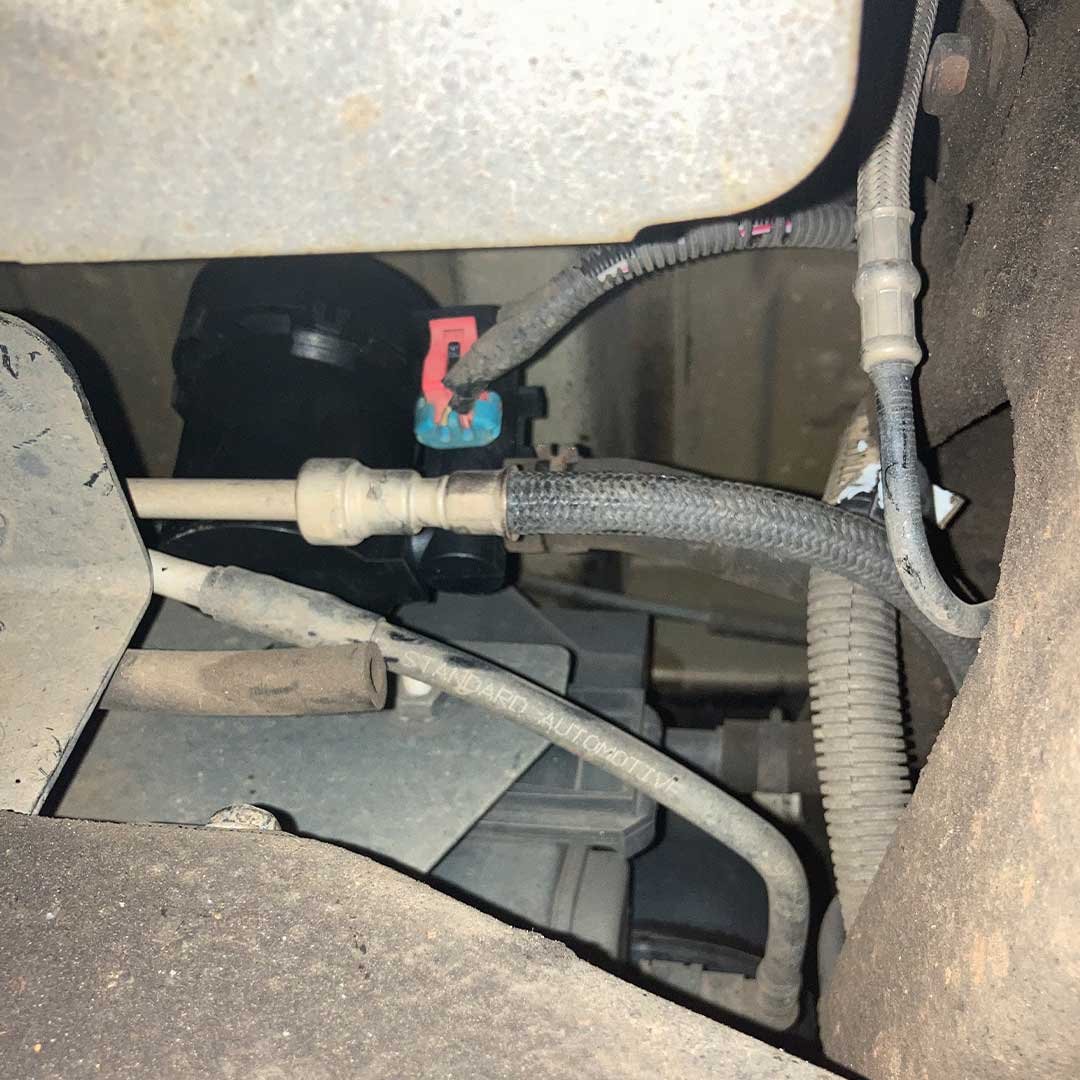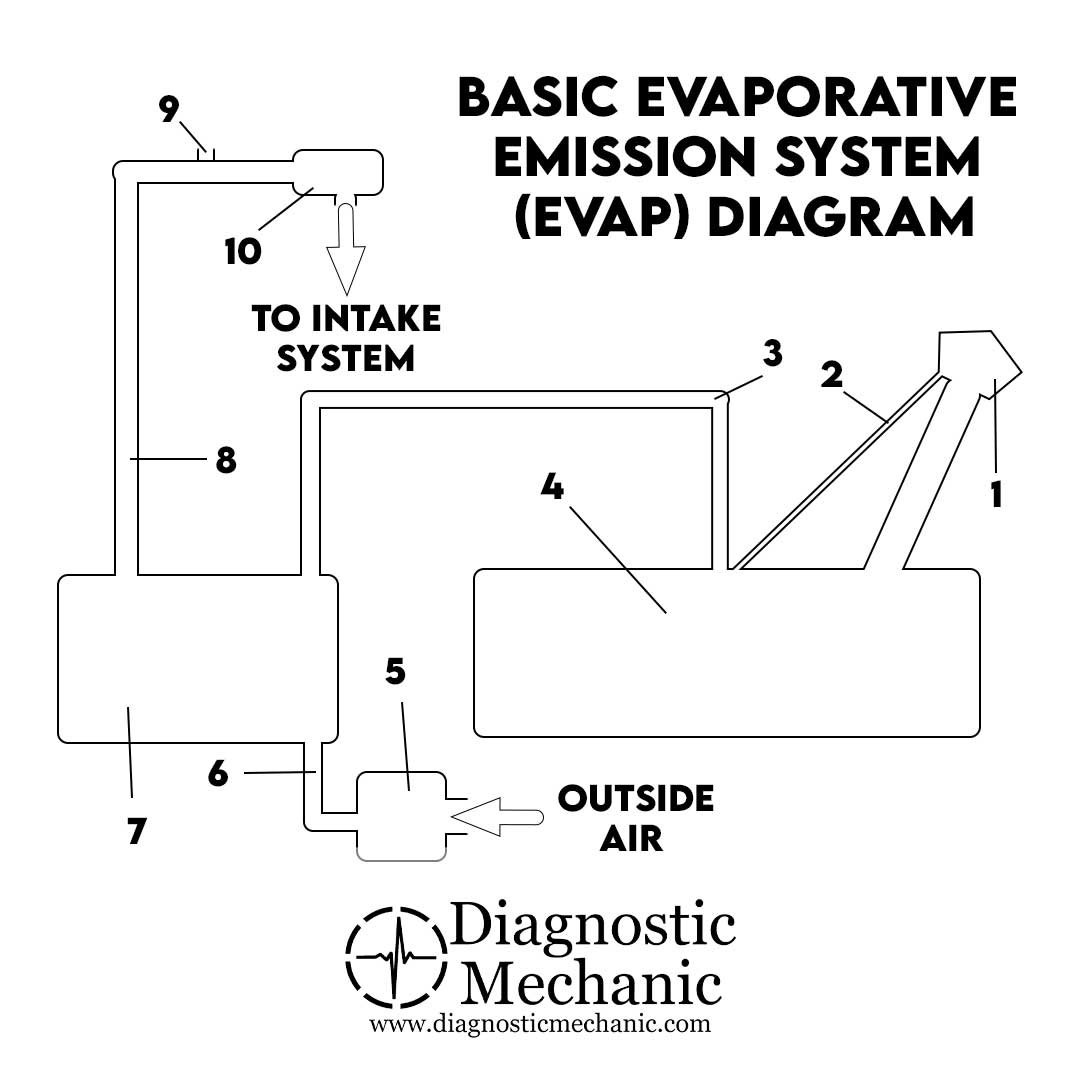Is your EVAP Vent Valve the problem? (How to find out!)
New EVAP Vent Valve under car
The check engine light can be a menace.
If your check engine light is on, in most cases, it is an immediate failed emissions test.
But what if all you need is an EVAP vent valve?
In this article, we will look at the EVAP vent valve (also known as the canister vent valve), and how a proper diagnosis can get the check engine light off of your instrument cluster.
While we are at it, we will have a basic look at the evaporative emissions system and at a common fault code that the EVAP vent valve can produce on modern vehicles.
How does the EVAP system work?
The basic idea of the EVAP system is to control gas vapors from escaping the vehicle and causing air pollution and damage to the environment.
The EVAP system works with many components including the purge valve solenoid, charcoal canister, fuel tank, and gas cap.
The car's computer (engine control module) uses the purge valve to allow engine intake vacuum to suck fuel vapors, that are stored in the charcoal canister, into the engine to be used in combustion.
For more information, check out this other article on the EVAP system.
What is an EVAP vent valve?
The EVAP vent valve is an "on/off", mechanical valve that controls the outside air entering the EVAP system.
It is an important component in the large and small leak tests that the engine computer performs for the EVAP system.
A crucial part of the EVAP system is to seal completely. The EVAP vent valve allows the system to seal while the engine computer monitors the proper pressure. If there is a leak in the system, the engine computer will recognize it through the fuel tank pressure sensor.
EVAP Vent Valve
How much does it cost to replace an EVAP vent valve?
Costs can vary from $50 to $250 depending on your specific vehicle. Labor fees from an auto repair shop can add to your overall cost.
Labor fees from an auto repair shop are usually hourly. In most cases, it takes less than an hour to replace the EVAP vent valve.
Is a vent valve the same as a purge valve?
No, the EVAP vent valve and the purge valve are not the same.
The vent valve is generally an "on/off" circuit. It is either open or close. When it is "off,” it is in the open position. It allows air into the EVAP system when the engine computer commands it open. In most cases, it is located near the charcoal canister and may be underneath the vehicle.
The purge valve is a "duty-cycled" circuit. It can be opened up in percentages from 0% to 100%. When it is "off", it is in the closed position. When the engine computer commands the purge valve open, it allows the engine vacuum to suck fuel vapors into the engine to be used. The purge valve is generally in the engine bay and sometimes on or near the engine intake manifold.
What happens when the EVAP solenoid goes bad?
Generally, the check engine light will illuminate when the EVAP vent valve goes bad.
The fault code that is produced can be misleading in some cases. For instance, a P0455 code can be produced when an EVAP vent valve is stuck open. A P0455 code indicates a large EVAP leak. Just by reading the code, it would not indicate that the EVAP vent valve is stuck open.
A common code caused by a bad EVAP vent valve
Common codes for a bad EVAP vent valve are:
P0455 - Large leak in the EVAP system detected
P0449 - Evaporative Emission System Vent Valve/Solenoid Circuit
Most common problem with the vent valve.
Common problems with the EVAP vent valve are:
The EVAP vent valve becomes stuck open or closed.
With the EVAP vent valve being a mechanical valve, a common failure is it becoming stuck. This can cause excess fuel vapors to escape into the air (stuck open), or an excess vacuum from air not being able to be vented (stuck closed)
The circuit internal to the EVAP vent valve becomes shorted or opened.
The electrical part of the EVAP vent valve can also stop working.
The wires going to the EVAP vent valve become damaged.
Damage from rodents, corrosion, or debris from the road can cause multiple issues with controlling the EVAP vent valve.
The vent lines become clogged.
A common issue on vehicles that drive on roads with extreme dirt and debris is a clogged vent line. Some EVAP vent valves have a long tube that is part of the vent. Dirt, dust, and bugs can clog this tube. This in turn will not allow the EVAP system to vent properly.
How do I replace the EVAP vent valve?
Replacing an EVAP vent valve can be straightforward. Generally, all it takes is a simple socket set, though a newer car may require extra panels to be removed.
Auto manufacturers do tend to differentiate from each other when it comes to the design and placement of the EVAP vent valve.
If you need assistance locating or trying to remove your EVAP vent valve, try AlldataDIY.
AlldataDIY has all of the resources you need for repairing your car. From wiring diagrams to repair procedures, AlldataDIY has it!
What are some symptoms of a bad EVAP vent valve?
The EVAP vent valve can produce different symptoms for each vehicle, but two common symptoms are a check engine light and a noticeable fuel smell. Depending on where the EVAP vent valve is, the fuel smell can be smelt inside or outside of the vehicle.
The evaporative emission control system is a complex part of your vehicle. Proper diagnosis of EVAP codes will give you the best possible results.
A trouble code that is not diagnosed correctly can lead you down an expensive path of parts. If you don't know where to start when it comes to your EVAP system, ask a trusted auto mechanic. He or she may find that all you need is a fuel cap.
Disclaimer and Disclosure:
Due to factors beyond the control of DiagnosticMechanic.com, it cannot guarantee against unauthorized modifications of this information, or improper use of this information. DiagnosticMechanic.com assumes no liability for property damage or injury incurred as a result of any of the information contained in this website. DiagnosticMechanic.com recommends safe practices when working with power tools, automotive lifts, lifting tools, jack stands, electrical equipment, blunt instruments, chemicals, lubricants, or any other tools or equipment seen or implied in this website. Due to factors beyond the control of DiagnosticMechanic.com, no information contained in this website shall create any express or implied warranty or guarantee of any particular result. Any injury, damage or loss that may result from improper use of these tools, equipment, or the information contained in this website is the sole responsibility of the user and not DiagnosticMechanic.com.
DiagnosticMechanic.com is a participant in the Amazon Services LLC Associates Program, an affiliate advertising program designed to provide a means for sites to earn advertising fees by advertising and linking to Amazon.com. In many of our case studies, articles, and tool reviews, we may earn a small commission when readers purchase products through our links.





